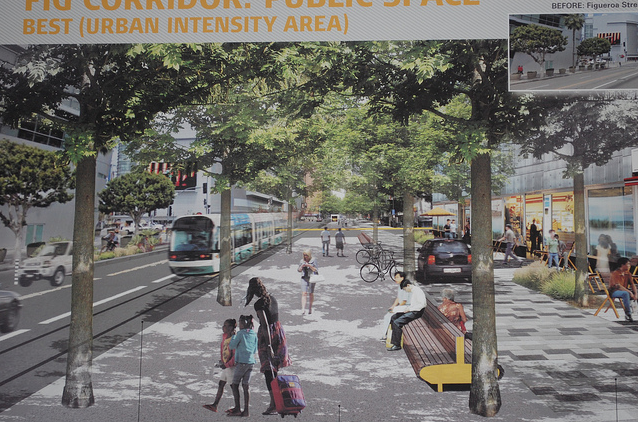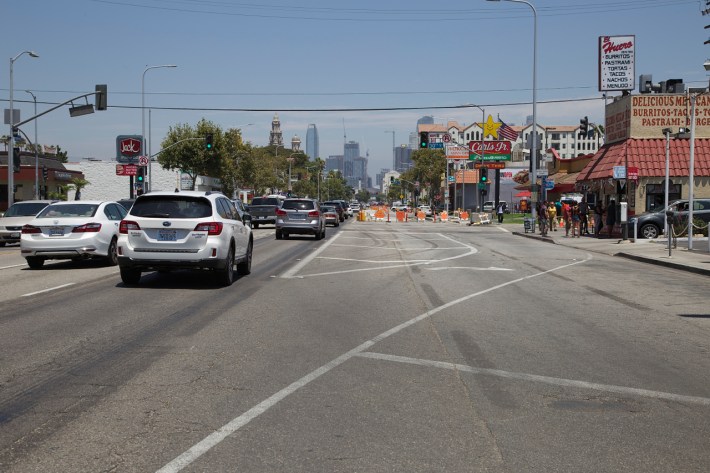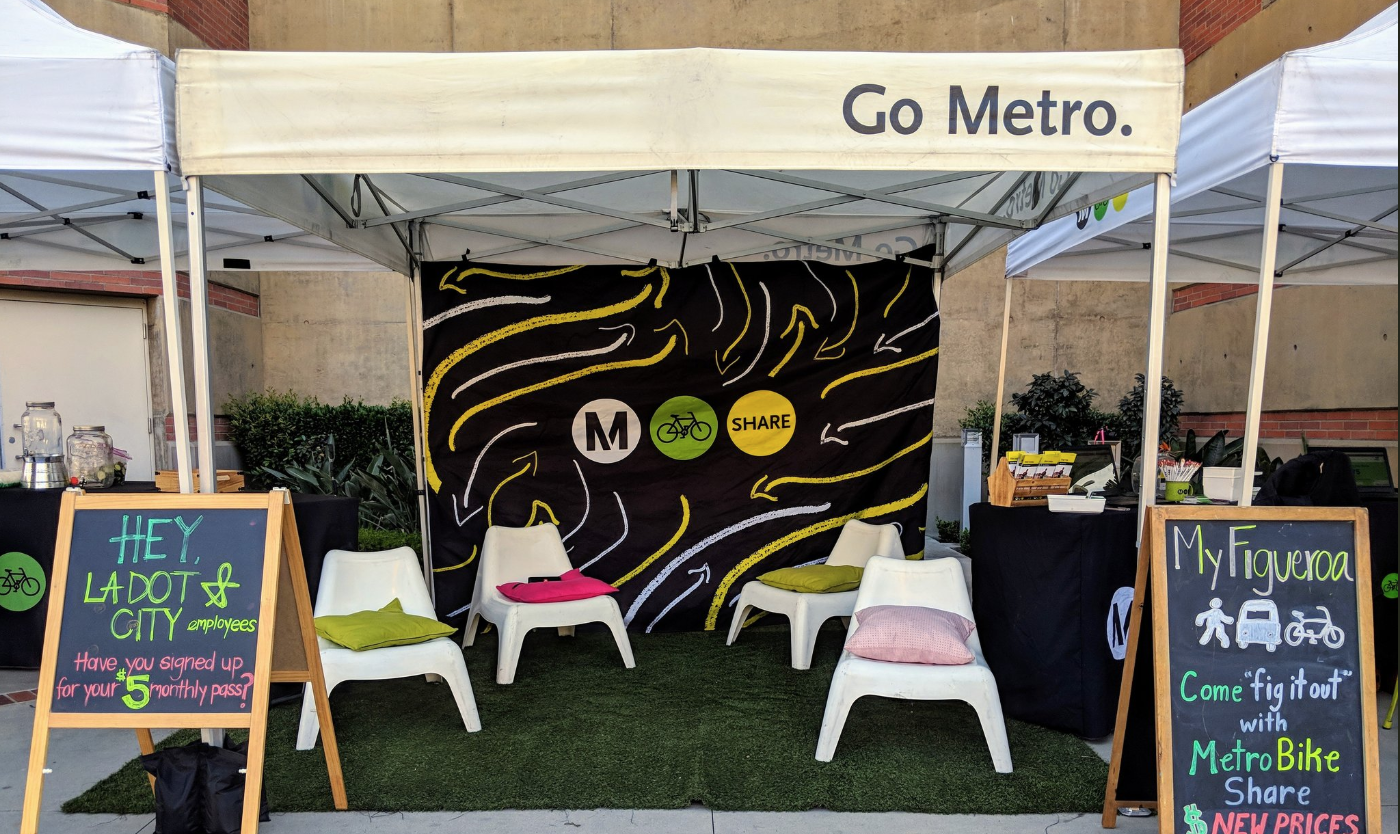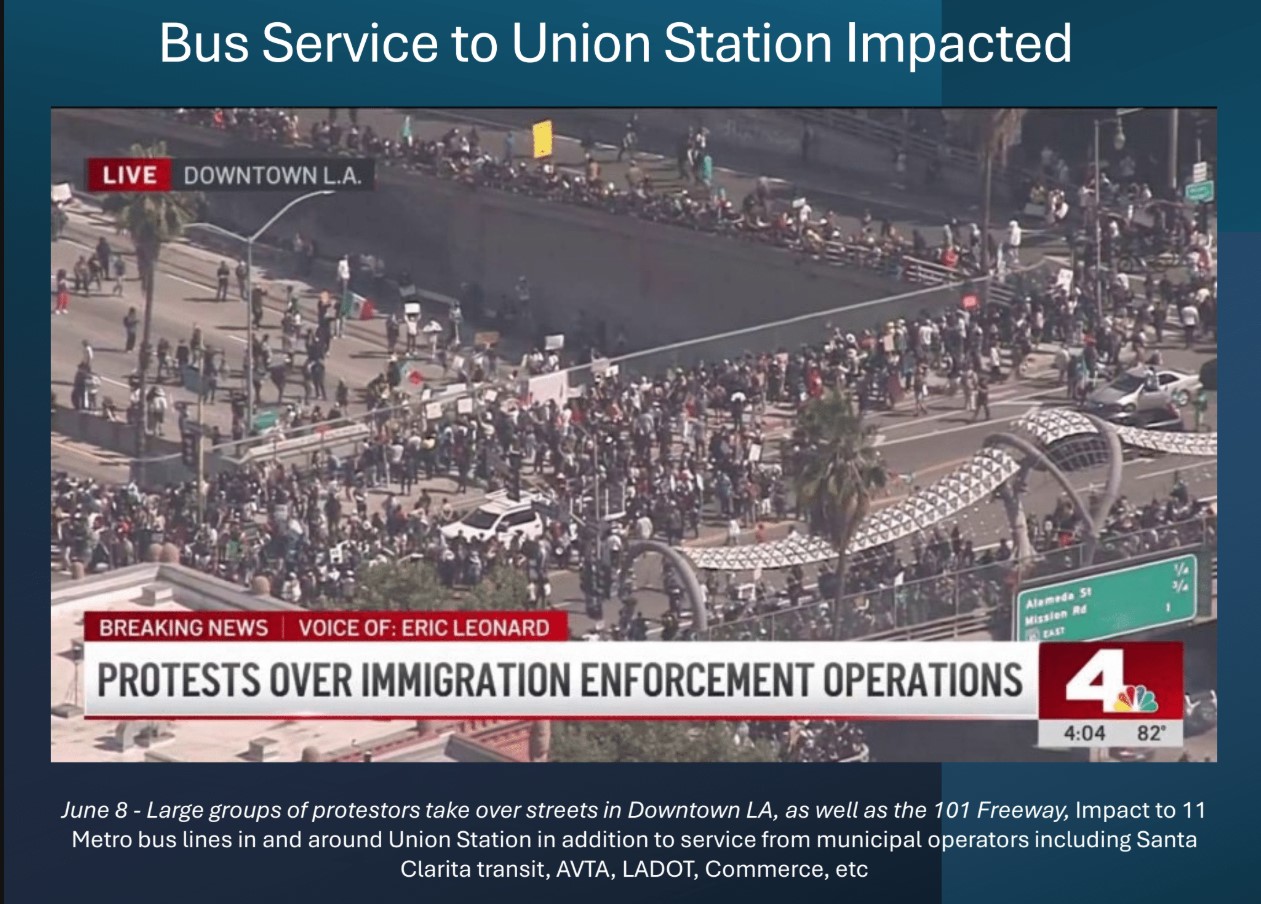Earlier today, political leaders, LADOT staff and safe streets advocates gathered to celebrate the opening of the long-awaited, highly controversial MyFigueroa project at both a "grand opening" (at the southeast corner of South Figueroa Street and West Jefferson Avenue) and a "Community Celebration" at LADOT Headquarters (which is not along the project area). MyFigueroa was originally a project designed to establish a safe corridor connecting Downtown Los Angeles through L.A. Live and USC to South L.A. The project area runs between 7th St. and Martin Luther King, Jr. Blvd. - from Downtown to Expo Park.
“Our city streets are bustling with life, and we owe it to Angelenos to make sure they are safe, vibrant places that everyone can enjoy,” said Mayor Eric Garcetti. “The MyFigueroa project is a major upgrade to more than four miles of our busiest streets -- making the trip from Downtown to South L.A. a safer, more enjoyable experience for all.”
However, many of the components of the project have been open for months, and the feedback from bicyclists, pedestrians, and safe street advocates has not been positive. Facebook posts and videos soon popped up on a hastily created Facebook page for supporters of the original project. Mistimed signals, pedestrian "beg buttons," and occasionally (rather than fully) protected bike lanes have turned what Mayor Antonio Villaraigosa termed a "legacy project" in 2011 into something of a disappointment in 2018.
Indeed, a protest of the project, scheduled by safety advocates to disrupt the opening, was only scrapped after LADOT fixed some of the problems that have been identified with the project. LADOT eliminated the "beg buttons" at the North end of the project, retimed the lights at the cycle-track so cars and bikes have the same timing, and agreed to create a working group with residents and activists to continue to monitor and improve the project.
"In the questions and pushback the city received around the initial performance of MyFigueroa, it's clear that there was a lack of engagement with relevant stakeholders on some of the important decisions that determine project success," writes Michael MacDonald, a local advocate for safe streets and co-founder of the Keep MyFig On Track working group.
"It's our hope that the City will see this as a teachable moment, and find ways to work with community members and the advocacy community that championed this project to remedy issues that hinder project success and set a high standard for how we envision our streets and how people may use them."
There are certainly lessons to be learned.
Between 2010 and 2012, the City of Los Angeles put a lot of time and effort into promoting the MyFigueroa project. When the state's Community Redevelopment Agency closed shop under Jerry Brown in 2012, the city even picked up responsibility for the project at LADOT. Villaraigosa, councilmember José Huizar, then-councilmember Jan Perry, and the LADOT General Manager all spoke about how the project would transform peoples' lives and change the way we think about transportation. At a public meeting in 2012, the project team presented “Good,” “Better” and “Best" visions for the corridor that electrified community and safe street advocates alike.

But after Eric Garcetti replaced Villaraigosa and Curren Price replaced Perry, things changed. The once loquacious social media accounts for MyFigueroa went quiet except for the occasional "construction will start soon!" posts every couple of months. Public hearings on the project were packed with supporters, but neither Price nor Garcetti showed the enthusiasm that their predecessors did. Price authored a motion that seemed aimed at stalling it outright, and a lawsuit threatened by the owner of a car dealership along Figueroa also promised to add significant delays, if not derail it altogether.
Compromises were made behind the scenes and “good,” “better” and “best" were quietly replaced with "maybe this is good enough."
By the time ground finally broke in October of 2016, the overall slowdown with regard to the implementation of bike facilities around the city had many feeling jaded.

So, when Price fondly recalled a recent trip to Germany and Denmark where he observed bicycle-friendly streets, and stated his intention to explore adding protected bike lanes in his district to make streets safer “for everyone, not just a few,” advocates knew better. Price had positioned himself as one of the more significant barriers to building an important bike network that would serve both riders of choice and riders of necessity. Most notably, with an assist from the mayor's Great Streets program, he had spent months openly ignoring or otherwise thwarting his constituents' demands to see a protected bike lane planned for Central Avenue. And to ensure his constituents - the vast majority of whom ride out of necessity - remained unprotected for years to come, he pushed to have it removed from the Mobility Plan altogether.
The slow pace of construction of the project didn't instill much confidence, either.
When real inroads finally began to be made last summer - around the time the project was supposed to have officially opened - the streets got even dicier to navigate for both drivers and cyclists.

And it became more apparent over time that cyclists were likely not going to be as "protected" as they had hoped.
A year and some change later, "protection" continues to be a bit of a moving target. LADOT has been responsive to complaints that taxis were parking in the lane, for example, and added bollards to limit that in spots around the Convention Center.
More bollards up! @myfigueroa safety improvements continue near @conventioncenterla @staplescenterla Ride on! #safety #bollards #MyFig pic.twitter.com/Ob7TLOcpkq
— LADOT (@LADOTofficial) July 3, 2018
But they have yet to find a solution to the cars that line up in the bike lane to turn right or enter a parking lot on days that the convention center is hosting major events.
And, of course, getting Los Angeles' finest to respect that this infrastructure has value to vulnerable road users remains an ongoing struggle. Or, as Cesar Hernandez, Deputy Executive Director of the LACBC, noted in an email to us, to not use the confusing bike signals as an excuse to target cyclists, particularly lower-income riders of color.
Today in the Figueroa Chronicles: when law enforcement thinks "taking the lane" means parking in it. cc: @LADOTofficial pic.twitter.com/f0uZcjBJVB
— sahra (@sahrasulaiman) July 2, 2018
The challenges that have dogged this project suggest just how difficult it will be to scale up this kind of infrastructure along other corridors. Or even to expand the MyFig project to truly serve lower-income riders in South L.A. - the actual justification for the original grant and the goal of which this project falls the shortest.
But the number of cyclists taking advantage of the route even before the official opening and the seeming acknowledgement by LADOT (and apparently, the mayor) that engaging with supporters going forward will make their job easier do provide some hope.
"We are excited to see MyFig come to fruition," writes Hernandez, noting that the LACBC plans to lead a ride this fall with an emphasis on education and safety.
"Thank you for pushing us forward." LADOT GM @seletajewel recognizes @lacbc, @LosAngelesWalks & Keep MyFig On Track in making sure #MyFigueroa works for those that use it pic.twitter.com/pmERFSf2uk
— Bike The Vote L.A. (@bikethevote) August 30, 2018







